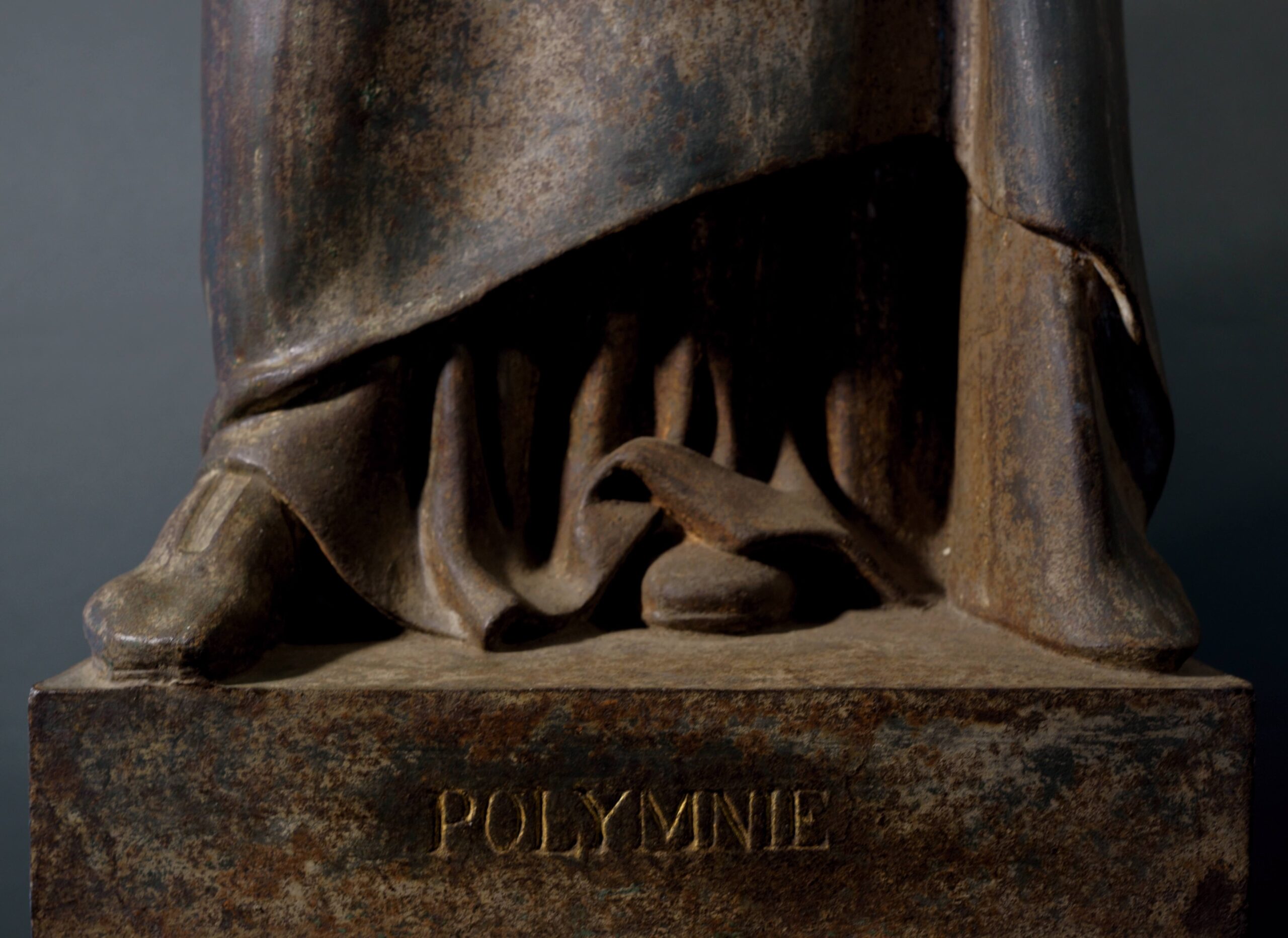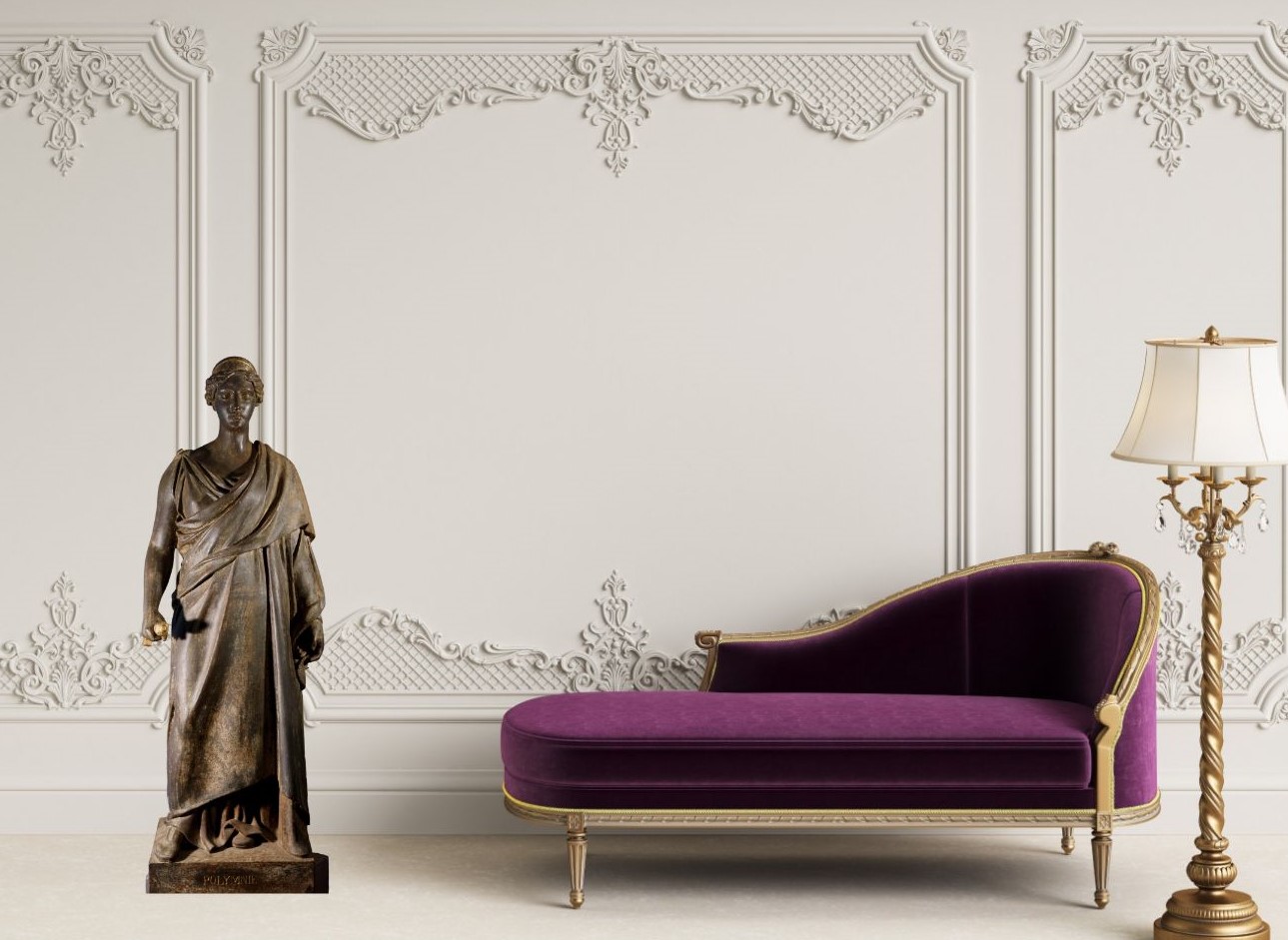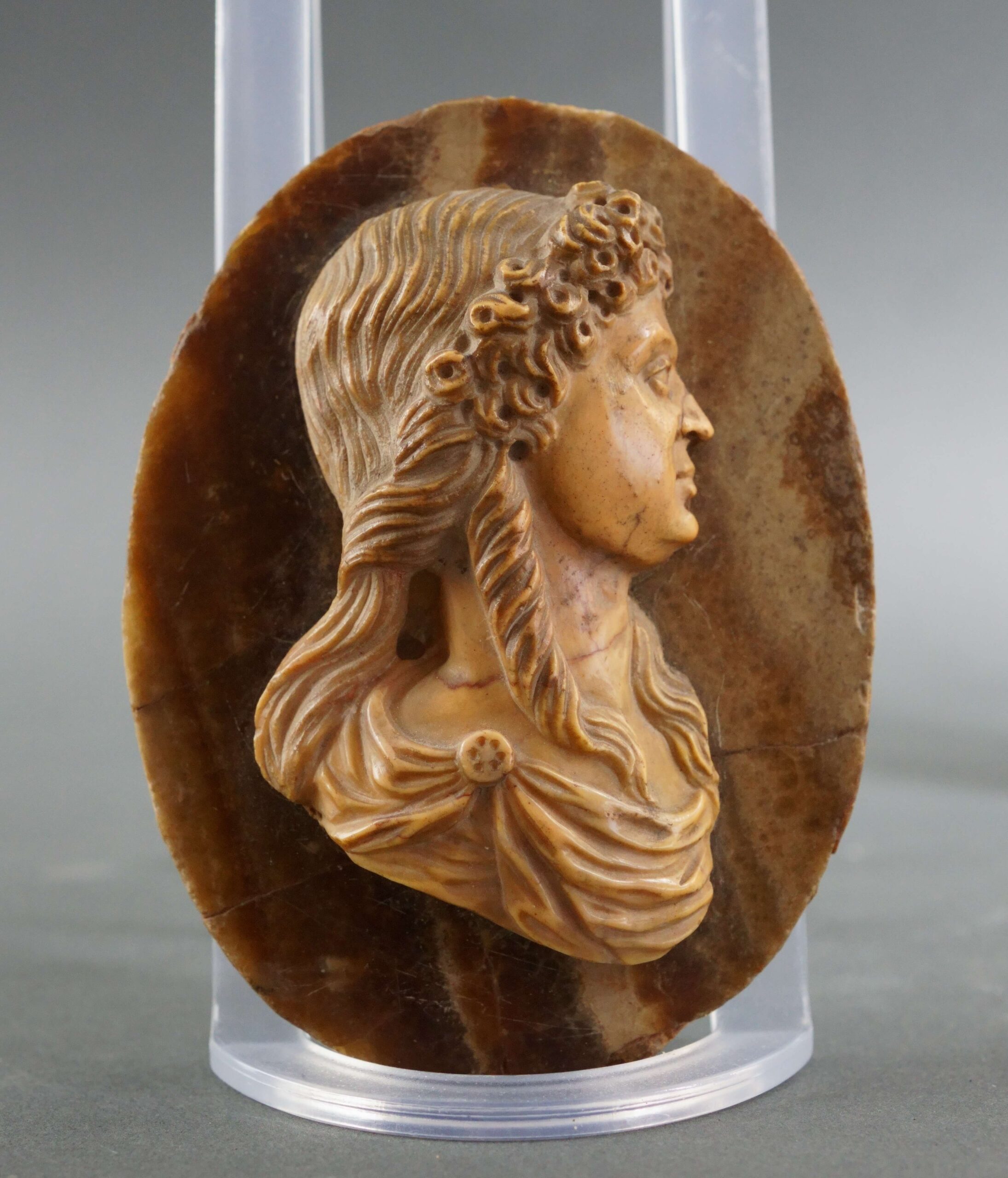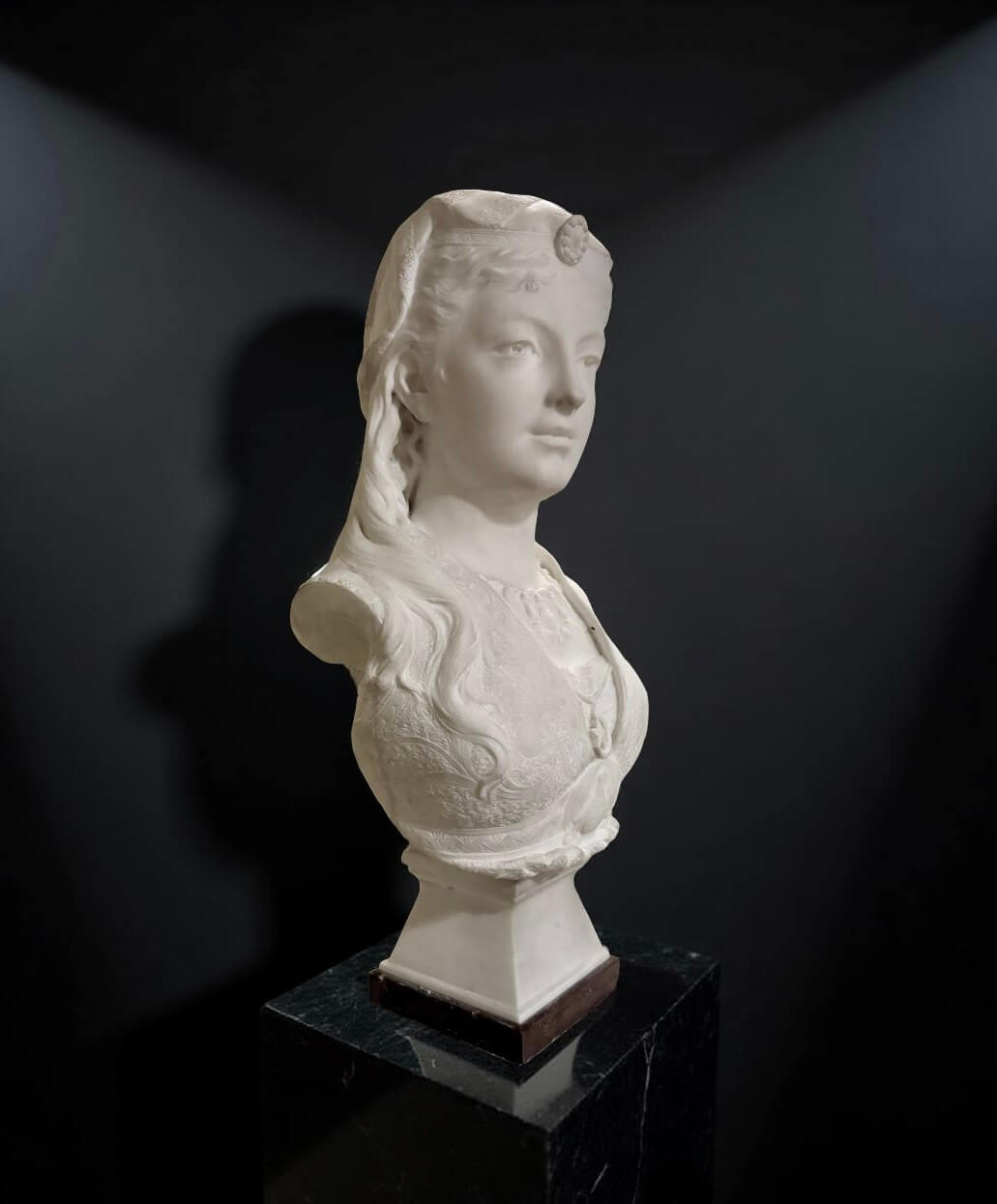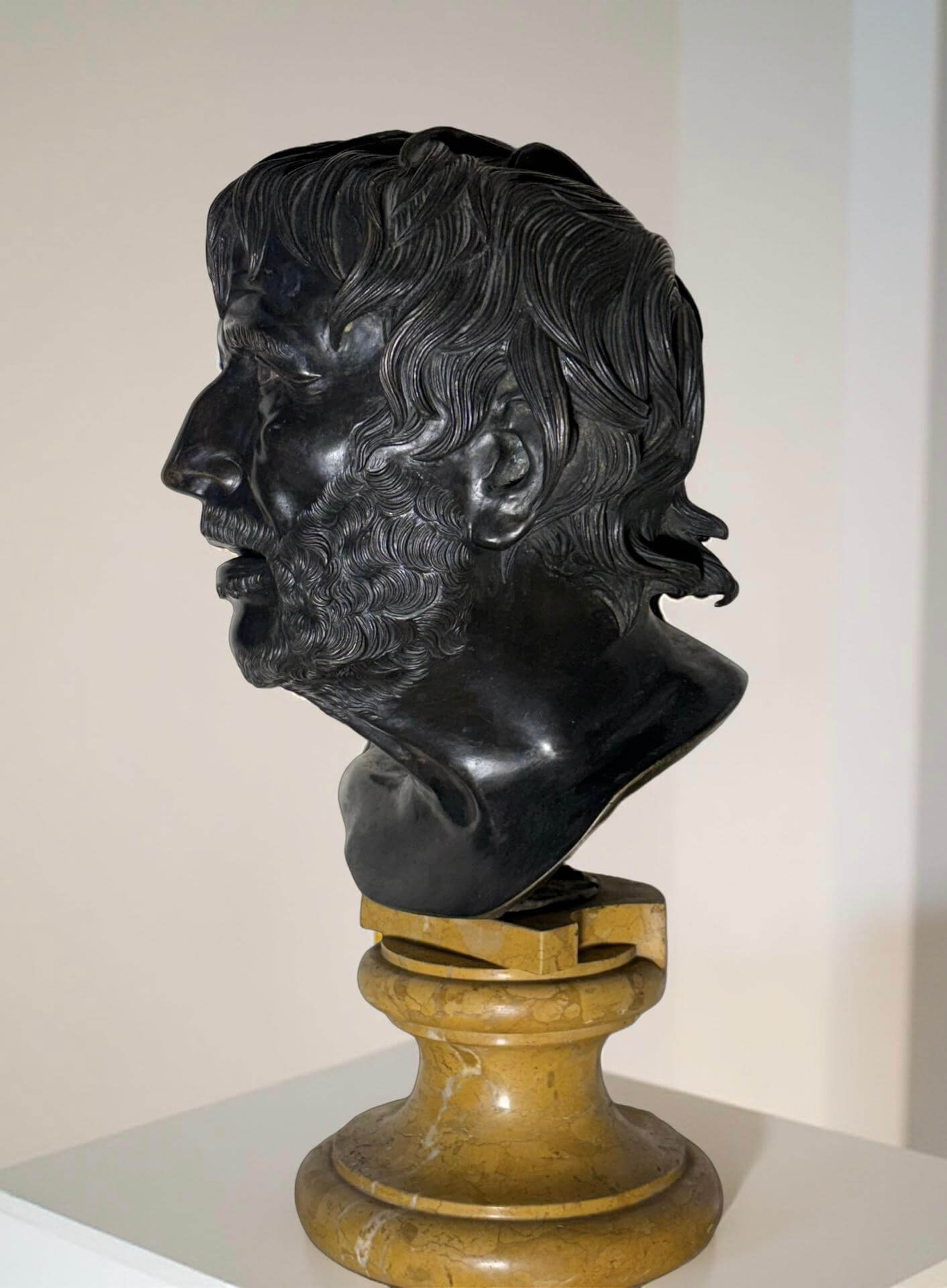Imposing cast iron sculpture titled “Polymnia”, Tusey Foundry, late 19th century.
In modern times Tusey, a village in the Meuse, was best known for its renowned foundry. The foundry successively took the names Muel, Muel et Wahl, Zégut Gasne, Dufilhol et Chapal, Dufilhol, Chevaillier… It is one of the most important companies specializing in art casting.
Created in 1832 by Pierre Adolphe Muel, from a family of Vosges ironwork masters, the Tusey foundries were oriented, from the outset, towards the manufacture of artistic objects in cast iron. Muel will cast the two fountains, as well as sixteen rostral columns of the Place de la Concorde (1837-1838). This cast iron street furniture, symbol of the union of Art and Industry, created by Jacques Hittorff is the first and masterful example of a production which will revolutionize town planning and export a French art of living in the whole world. In his treatise: On the Foundry as it exists in France…, André Guettier, professor at the Royal School of Arts and Crafts in Angers, and former director of the Tusey foundry (1839-1843), describes precisely the manufacturing and covering techniques for the fountains of Place de la Concorde. It thus testifies to know-how perfectly mastered from the first half of the 19th century.
Muel joined forces with Wahl in 1840. Then the factory was taken over by Ed. Zegut (1862-1874), former associate of the Haut-Marne art founder Antoine Durenne. Louis Gasne succeeded him in 1874. During the Paris Universal Exhibition of 1889, it was planned that he would present a monumental fountain under the Eiffel Tower, but this creation was not ready in time, which explains why the fountain was made of plaster and was never made. He took over the Thiébaut foundry in 1896.
In 1861, Jean Baptiste Barbe and his son Paul Barbe became the owners of the Forges de Tusey.
Zégut then Gasne will contract with Louis Thiriot, owner of models in Paris (92, rue Amelot). Some Thiriot models appear in the Zégut catalog. That of Gasne (1890) includes all the models from the Thiriot catalog (1887). These models will be purchased by Capitain-Gény and Salin (forge masters and brothers-in-law) at an undetermined date. A certain number of them now appear in the funds of these companies which became Ferry-Capitain and Ateliers Salin.
In 1896, the factory passed into the hands of Paul Dufilhol (1860-1937) and Gaston Chapal (1871-1921). Gaston Chapal’s time in Tusey was short-lived; in 1898, he took over, with his father, the foundries and workshops of Kerloc, in Auray. At the same time, he managed the sawmills and workshops in Voutenay (Yonne). Paul Dufilhol, owner between 1897 and 1904, continued the foundry activity alone until the bankruptcy of 1904. He enriched the collection of artistic models.
In 1906, the factory was bought by Laurent Chevailler, who produced war memorials and ceased production of art fonts around 1920. Laurent Chevailler’s heirs succeeded him (there is a 1925 catalog no longer including art fonts). art, but simply elements of locksmithing: balconies, window sills, etc.). This company was taken over by Pierre Esch in 1935. It merged with the Ateliers et Fonderies de Meuse (former Fonderie Jeanne d’Arc in Vaucouleurs), which became Fonderies de Vaucouleurs in 1961. The Tusey site was abandoned in 1963 and the production of mechanical cast iron is refocused on Vaucouleurs. Present at the universal exhibitions from 1851 to 1900 and at national exhibitions, this foundry regularly won prizes and medals.
Polymnie, an imposing cast iron sculpture measuring 112 cm in height, is published in the catalog of the Fonderie de Tusey for the years 1896 and 1896, during the direction of Dufilhol on page 76. The foundry had created, unique of its kind, the statues of the nine Muses and their guide, Apollo.
Traces of Tusey’s F.ie signature are still visible at the base of the sculpture. Traces of gilding at the crown and hammer.
Upon request, I can provide photos from the catalog, which accompany the sculpture. Original patina. Very good state of conservation.
Measures
H cm 112
Base cm 34 x 30








